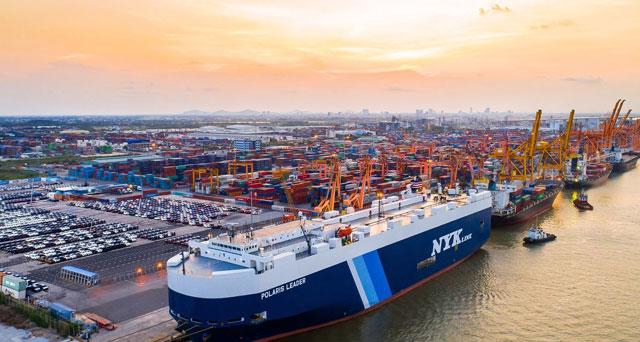Comparing Vietnam’s Seaports: Da Nang vs. Hai Phong
Vietnam’s strategic location along the East Sea has positioned it as a pivotal player in global maritime trade. Among its numerous ports, Da Nang and Hai Phong stand out due to their unique advantages and roles in the nation’s logistics and economic landscape. This article delves into a comprehensive comparison of these two significant seaports, highlighting their capacities, facilities, technological advancements, and strategic importance.
1. Geographic and Strategic Significance
Da Nang Port: Situated in Central Vietnam, Da Nang Port serves as a crucial gateway to the East-West Economic Corridor, connecting Vietnam with Laos, Thailand, and Myanmar. Its central location makes it a vital hub for trade between the country’s northern and southern regions.Wikipedia
Hai Phong Port: Located in the north, Hai Phong Port is Vietnam’s second-largest port and the most significant in the northern region. It acts as the primary maritime gateway for the Red River Delta and the capital, Hanoi, facilitating substantial import and export activities.The Investor
2. Port Infrastructure and Capacity
Da Nang Port:
-
Terminals: Comprises the Tiên Sa Seaport and Sông Hàn Terminal, along with the Tho Quang Station.Wikipedia
-
Tiên Sa Seaport: Features a navigation depth of 11 meters, accommodating vessels up to 45,000 DWT and container ships up to 2,000 TEUs. It has five berths totaling 965 meters in length.Wikipedia+1The Investor+1
-
Sông Hàn Terminal: With a navigation depth of 6-7 meters, it can handle vessels up to 5,000 DWT. The terminal has five berths with a combined length of 528 meters.Wikipedia
-
Cargo Throughput: In 2008, the port handled approximately 2.7 million tons of cargo.Wikipedia
Source: Da Nang Port – Wikipedia
Hai Phong Port:
-
Terminals: Includes multiple terminals such as Dinh Vu, Nam Dinh Vu, and the deep-water Lach Huyen International Gateway Port.Vietnam+ (VietnamPlus)+8heza.gov.vn+8Vietnam Economic Times | VnEconomy+8
-
Lach Huyen Port: Vietnam’s first deep-water port in the north, capable of accommodating vessels over 130,000 DWT. Berths 1 and 2 have been operational since 2018, with further expansions underway.gawnpcapital.vnheza.gov.vn+1heza.gov.vn+1
-
Cargo Throughput: In 2024, Hai Phong ports handled nearly 40 million tons of cargo, with container throughput estimated at nearly 2 million TEUs.gawnpcapital.vn+3Vietnam Economic Times | VnEconomy+3Nhịp sống kinh tế Việt Nam & Thế giới+3
3. Technological Advancements and Digital Transformation
Da Nang Port: While Da Nang Port has been upgrading its facilities, there is limited information on significant digital transformation initiatives. The port continues to focus on enhancing its infrastructure to accommodate increasing cargo volumes and larger vessels.MarineLink Ports Directory
Hai Phong Port:
-
E-Port Services: Implemented electronic port services at Tan Vu Port, streamlining customs procedures and reducing processing times.THE VOICE OF VIETNAM+1heza.gov.vn+1
-
Smart Gate System: Introduced to increase productivity and convenience for shipping lines and transport enterprises.THE VOICE OF VIETNAM
-
Digital Operations: Management and operations have been digitized, including vehicle and equipment management, customer service through AI chatbots, and automated information exchange.THE VOICE OF VIETNAM
4. Connectivity and Multimodal Transport
Da Nang Port: Connected primarily through road networks, Da Nang Port serves as a critical junction on the East-West Economic Corridor. However, its connectivity is relatively limited compared to Hai Phong, especially in terms of rail and inland waterways.Wikipedia
Hai Phong Port:
-
Multimodal Transport: Boasts comprehensive connectivity, including sea, river, rail, road, and air transport.Vietnam+ (VietnamPlus)+2heza.gov.vn+2heza.gov.vn+2
-
Infrastructure: Connected to major expressways like Hanoi – Hai Phong, Hai Phong – Ha Long, and the Tan Vu – Lach Huyen highway. Also linked to the Lao Cai – Hanoi – Hai Phong railway and Cat Bi International Airport.Nhịp sống kinh tế Việt Nam & Thế giới+6gawnpcapital.vn+6heza.gov.vn+6
5. Strategic Development and Future Plans
Da Nang Port: Plans are underway to expand and modernize the port’s infrastructure to handle larger vessels and increase cargo throughput. However, specific details on future projects remain limited.
Hai Phong Port:
-
Expansion Projects: Phase 1 of berth 3 at Lach Huyen is set to commence operations in the first quarter of 2025. Chua Ve port is also slated for upgrades to accommodate vessels up to 40,000 DWT.heza.gov.vn+2Vietnam Economic Times | VnEconomy+2Nhịp sống kinh tế Việt Nam & Thế giới+2MarineLink Ports Directory+2Nhịp sống kinh tế Việt Nam & Thế giới+2Vietnam Economic Times | VnEconomy+2
-
Joint Ventures: Established partnerships with international entities like SITC and TIL to operate container berths at Lach Huyen, enhancing its global connectivity.Vietnam Economic Times | VnEconomy+1Nhịp sống kinh tế Việt Nam & Thế giới+1
6. Conclusion
Both Da Nang and Hai Phong ports play pivotal roles in Vietnam’s maritime infrastructure. Da Nang Port, with its strategic central location, serves as a vital link in the East-West Economic Corridor, facilitating trade within the ASEAN region. On the other hand, Hai Phong Port stands out as a technologically advanced, multimodal transport hub, crucial for Vietnam’s northern economic activities and international trade.
For businesses and investors, the choice between the two ports depends on specific logistical needs, target markets, and the nature of goods transported. As Vietnam continues to invest in its port infrastructure, both Da Nang and Hai Phong are poised to offer enhanced services and capacities, contributing significantly to the country’s economic growth.
Related Articles:
